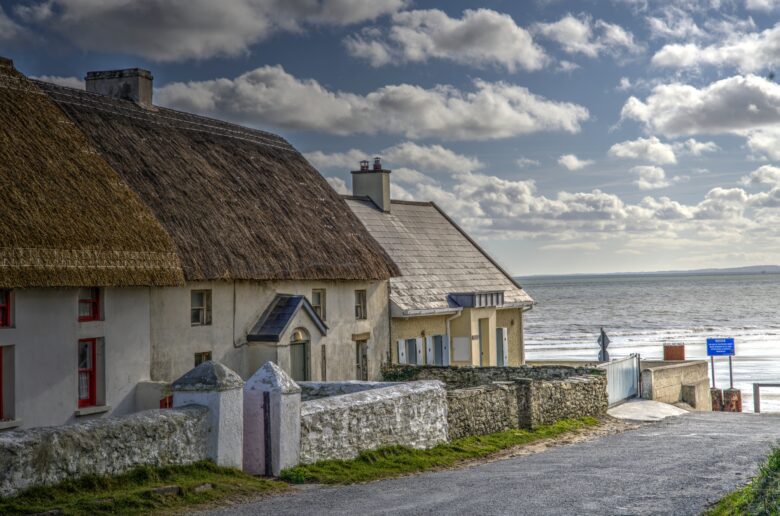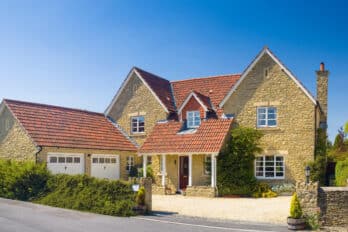
Everything You Need to Know About Buying Houses of Non-Standard Construction
When it comes to the UK property market, residential properties are generally categorised as either ‘standard’ or ‘non-standard’ construction. A ‘standard’ property typically refers to a home built with brick or stone walls and a pitched roof covered with slate or tile. In contrast, properties that don’t meet these criteria are considered ‘non-standard construction.’ While buying a standard property tends to be straightforward, purchasing a non-standard or non-standard home often involves more complexities.
Understanding whether a home is of standard or non-standard construction is crucial for buyers and homeowners alike. The type of construction impacts factors like mortgage availability, insurance costs, and how easy it will be to sell. In this article, we’ll cover everything you need to know about non-standard construction, including answers to the most frequently asked questions.
How to Identify a Non-Standard Construction Property
Determining whether a home is non-standard is relatively straightforward. Standard homes in the UK are generally built with brick or stone walls and tiled or slate roofs. Non-standard construction, on the other hand, refers to houses built with alternative materials such as glass, metal, plastic, steel, or thatch roofs. Due to their unconventional materials and construction methods, non-standard homes often pose a higher commercial risk. They may have higher maintenance and repair costs, shorter lifespans, greater susceptibility to fire or damp, or other structural issues.
Therefore, it is essential to confirm a property’s construction type before purchasing. Sellers may provide documentation detailing this, but a RICS chartered surveyor can offer a professional assessment and advice on the property’s structural integrity.
Types of Non-Standard Construction Homes
Non-standard construction can range from traditional-looking homes with non-standard roofing (like flat-roofed houses) to innovative eco-homes.
Here are some common types:
- Steel-Framed Houses: These are lightweight and relatively affordable. However, steel frames are prone to corrosion, warping in a fire, and hidden structural problems. As a result, it can be difficult to find insurance and mortgage lenders for these properties. A notable example is BISF (British Iron & Steel Federation) houses, built by the British Iron and Steel Federation starting in 1946. Many of these houses have been found to contain asbestos and suffer from severe corrosion.
- Timber-Framed Houses: Unlike traditional brick houses that use concrete blocks for the inner walls and brick for the outer walls, timber-framed houses have an inner timber frame and an outer layer that could be clad in stone, brick, render, or timber boarding. Timber-framed homes are at a higher risk of fire and damp, making it challenging to secure insurance or a mortgage.
- Prefabricated/Modular Homes: Prefabricated or ‘prefab’ homes became popular in the UK after World War II to address the housing shortage caused by the Blitz. These properties can be expensive to repair, often requiring the replacement of large structural sections.
- Concrete Houses: Many concrete homes were also built as prefabricated buildings due to the material’s lightweight and durable nature. However, concrete can deteriorate over time, and the steel reinforcements can corrode, making these properties less attractive to mortgage lenders. PRC (Precast Reinforced Concrete) homes are a notable example.
- Cob Houses: Cob is one of the oldest building materials, made from a mix of subsoil, water, straw, lime, and other natural materials. While cob houses are durable, they require specialised knowledge for proper maintenance. These properties are commonly found in regions like the South West and Devon.
Importance of a Property Survey
When buying a non-standard construction home, arranging a comprehensive property survey is crucial. The most recommended type of survey for such properties is the Level 3 Home Survey, formerly known as a Building Survey. This survey provides an in-depth inspection and highlights any potential defects or issues that need to be addressed. It’s also advisable to hire a RICS qualified surveyor to identify hidden defects that may be missed by general surveyors.
Key Considerations When Buying a Non-Standard Construction House
When considering a non-standard construction property, it’s essential to understand the unique challenges associated with these homes:
- Building Surveys
A detailed building survey is critical when buying a non-standard construction house. This survey will provide an in-depth analysis of the property’s structure, identify any defects or potential issues, and recommend necessary repairs or maintenance. - Financing and Mortgages
Securing a mortgage for a non-standard construction home can be more challenging than for a standard property. Many lenders consider these properties to be higher risk due to potential structural problems, lower resale values, or difficulties in obtaining insurance. However, some lenders specialise in mortgages for non-standard homes and may offer more favourable terms. It’s advisable to consult with a mortgage broker experienced in non-standard properties. - Insurance Challenges
Insuring a non-standard construction property can be more complicated and costly. Insurers may classify these homes as higher risk due to the potential for structural defects, increased maintenance needs, or susceptibility to issues like dampness or corrosion. It is crucial to find an insurance company that can offer comprehensive coverage. - Maintenance and Repair Costs
Non-standard construction homes may require more frequent or specialised maintenance compared to standard brick-and-mortar houses. For example, timber-framed houses need regular treatment to prevent rot and pest infestations, while steel-framed homes may require protection against corrosion. Repair costs can also be higher, as the materials and expertise needed may be less common. - Resale Value and Marketability
While non-standard homes are often cheaper to buy, they may also be harder to sell. The limited pool of potential buyers, coupled with concerns about financing and insurance, can affect resale value and marketability. However, if the property is well-maintained and located in a desirable area, it can still appeal to niche buyers who appreciate unique architectural styles or eco-friendly designs. - Future Proofing and Renovation Potential
Some non-standard homes can be modernised and upgraded to improve their structural integrity, energy efficiency, and overall appeal. It is important to assess the potential for future-proofing the property by consulting with architects and builders who specialise in non-standard homes. Renovations can not only increase the home’s comfort and durability but also enhance its value and marketability.
Frequently Asked Questions (FAQs)
Q: What is a building survey, and why is it important for non-standard construction homes?
A: A building survey is a comprehensive inspection that evaluates a property’s condition and identifies any potential structural issues. For non-standard construction homes, a building survey is crucial because these properties often have unique materials and construction methods that require specialised evaluation.
Q: Can I get a mortgage for a non-standard construction house?
A: Yes, but it can be more challenging. Many lenders are cautious about providing mortgages for non-standard properties due to perceived risks. It’s advisable to work with a mortgage broker who has experience with non-standard homes to find lenders who offer suitable terms.
Q: Are non-standard construction houses harder to insure?
A: Yes, obtaining insurance for a non-standard construction property can be more difficult and expensive. Insurers often view these properties as higher risk due to potential structural issues and increased maintenance needs. It is crucial to find an insurer experienced in covering non-standard homes.
Q: What are the maintenance requirements for non-standard homes?
A: Maintenance requirements vary depending on the type of construction. Timber-framed homes need regular treatment to prevent rot and pest infestations, steel-framed houses require protection against corrosion, and concrete panel homes may need repairs for issues like concrete degradation.
Q: What should I look for in a building survey for a non-standard construction property?
A: Seek a surveyor who can deliver a comprehensive report and evaluate specific concerns related to both the property’s materials and any personal requirements. The assessment should prioritise areas such as structural integrity, dampness, insulation, susceptibility to corrosion or decay, and adherence to current building standards.
Q: Is buying a non-standard construction home a good investment?
A: It depends on various factors, such as the condition of the property, its location, and your plans for renovation or resale. While these homes can be cheaper to purchase, they may come with higher maintenance costs and challenges in obtaining financing or insurance. However, with the right care and upgrades, they can offer unique living experiences and potential value appreciation.
Conclusion
Buying or selling a non-standard construction house in the UK can be a complex process. The unique materials and construction methods used in these homes often lead to higher costs for maintenance, insurance, and mortgages. If you’re considering buying a non-standard property, working with experienced professionals, including RICS Chartered Surveyors, Insurers, and Mortgage Brokers, can help you navigate the challenges and make an informed decision.

